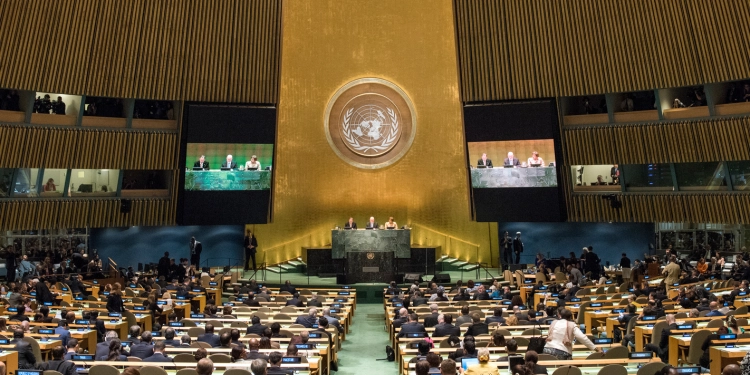in Business News, Economy
Article Summary
- Global economy is expected to pick up some momentum in 2024, but at 2.5 per cent, growth is projected to remain well below the longer-term (2000-2019) average of 3.1 per cent
- Power crisis in South Africa, including daily rolling power cuts, is projected to hamper economic activities much longer than expected
- In West and Central Africa, the level of food insecurity and malnutrition reached a 10-year high.
The United Nations revealed that global growth in 2023 is likely to be less severe than previously expected, due to resilient household spending in developed economies and recovery in China.
They revealed that Global growth is now projected to slow from 3.1 per cent in 2022 to 2.3 per cent in 2023, an upward revision by 0.4 percentage points from the January forecast
As Africa’s growth is projected to decelerate slightly from 3.5 per cent in 2022 to 3.4 per cent in 2023 before returning to 3.5 per cent in 2024, the UN disclosed this in its report titled “World Economic Situation and Prospects as of mid-2023.”
Resilient consumer
The report noted that while economic prospects remain subdued, the slowdown in global growth in 2023 is likely to be less severe than previously expected, due to resilient household spending in developed economies and recovery in China.
- “Global growth is now projected to slow from 3.1 per cent in 2022 to 2.3 per cent in 2023, an upward revision by 0.4 percentage points from the January forecast. Global inflation is projected to decline from 7.5 per cent in 2022 to 5.2 per cent in 2023, mainly due to lower food and energy prices and softening global demand.
- “Amid easing inflationary pressures, the global economy is expected to pick up some momentum in 2024, but at 2.5 per cent, growth is projected to remain well below the longer-term (2000-2019) average of 3.1 per cent
Africa
Africa’s growth is projected to decelerate slightly from 3.5 per cent in 2022 to 3.4 per cent in 2023 before returning to 3.5 per cent in 2024, they added:
- “Latest forecasts reflect downward revisions of 0.4 percentage points for 2023 and 0.3 percentage points for 2024 from the forecasts released in January, accounting for weaker growth prospects in Egypt and South Africa.
- “Egypt is now projected to face more pronounced balance of-payments constraints throughout 2023 despite recent monetary tightening measures and currency devaluations.
- “The power crisis in South Africa, including daily rolling power cuts, is projected to hamper economic activities much longer than expected.
However, Several factors are influencing near-term growth prospects in Africa, including monetary stances which are projected to remain mostly tight, credit conditions will further tighten.
- “The cost of external funding through international capital markets is expected to stay prohibitively high.
- “For countries with substantial financing gaps and high external debt burdens, space for domestic demand expansion is very limited in 2023.
- “Second, mining sector and mining-related investments will support growth in several African economies. The mining sector was the main driver of recent growth, particularly when tourism and other services sectors’ growth plunged during the pandemic.
- “ The expected completion of new investments, such as the Niger–Benin oil pipeline and a liquefied natural gas project offshore of Mauritania and Senegal, improves near-term growth prospects of several African countries.
However, UN warned that many countries in the region will face growing food insecurity, adding that despite declining international grain prices, a significant fraction of the population in Africa remains food insecure.
- “ In West and Central Africa, the level of food insecurity and malnutrition reached a 10-year high.”
Recent Turmoil
The UN warned that the recent banking sector turmoil in the United States and Europe has illustrated fragilities in the financial system, complicating the trade-off for central banks between fighting inflation and preserving financial stability.
- “After a decade of loose monetary policy with low interest rates and quantitative easing in developed countries, which encouraged excessive leverage in the financial sector and generated negative global spillovers, the prospect of high interest rates and quantitative tightening now poses a massive challenge for developing countries.
- “ Lack of access to affordable finance limits the ability of many governments to invest in education, health, sustainable infrastructure and the energy transition, while threatening to push a growing number of countries into debt default.


